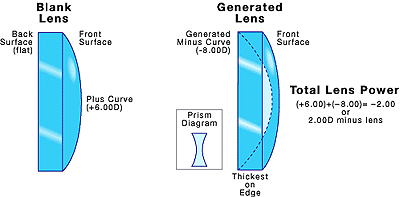Styles of monocle
The second style, which was developed in the 1890s, was the most elaborate, consisting of a frame with a raised edge-like extension known as thegallery. The gallery was designed to help secure the monocle in place by raising it out of the eye orbit slightly, so that the eyelashes could not jar it. Monocles with galleries were often the most expensive. The very wealthy would have the frames custom-made to fit their own eye sockets. A sub-category of the galleried monocle was the "sprung gallery", where the gallery was replaced by an incomplete circle of flattened, ridged wire supported by three posts. The ends were pulled together, the monocle was placed in the eye orbit, and the ends released, causing the gallery to spring out and keep the monocle in place.
The third style of monocle was frameless. This consisted of a cut piece of glass, with a serrated edge to provide a grip and sometimes a hole drilled into one side for a cord. Often the frameless monocle had no cord and would be worn freely. This style was popular at the beginning of the 20th century as they could be cut to fit any shape eye orbit cheaply, without the cost of a customized frame.
It is a myth that monocles were uncomfortable to wear. If they were customised then they could be worn securely with no effort, though periodic adjustment is a fact of life for monocle wearers to keep the monocle from popping, as can be seen in films featuring Erich von Stroheim. Often only the rich could afford to have them custom-manufactured and the poor had to settle for poorly-fitted monocles that were less comfortable and less secure. The popular perception was (and still is) that a monocle could easily fall off with the wrong facial expression. This is true to an extent, as raising the eyebrow too far will allow the monocle to fall.
The quizzing glass should not be confused with a monocle since it is held to one's eye with a handle, in a similar fashion to a lorgnette, and not by A once-standard comedic device exploits this: an upper-class gentleman makes a shocked expression in response to some event, and his monocle falls into his drink, smashes into pieces on the floor, etc. In visual media, the monocle might also be illustrated, or visually captured mid-flight, with some slack to the string as the glass travels downward.





